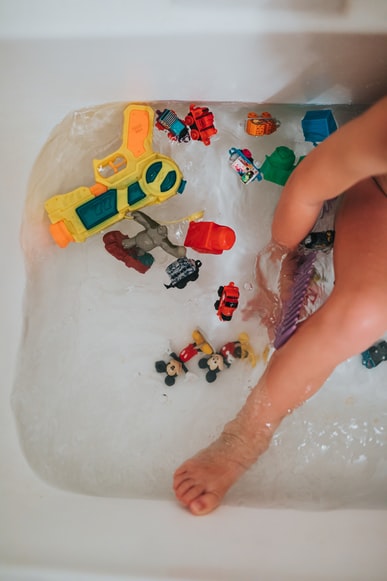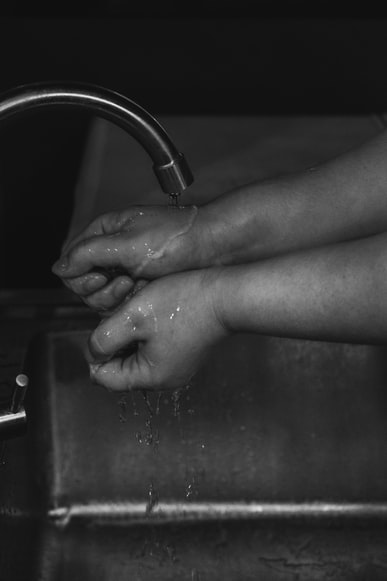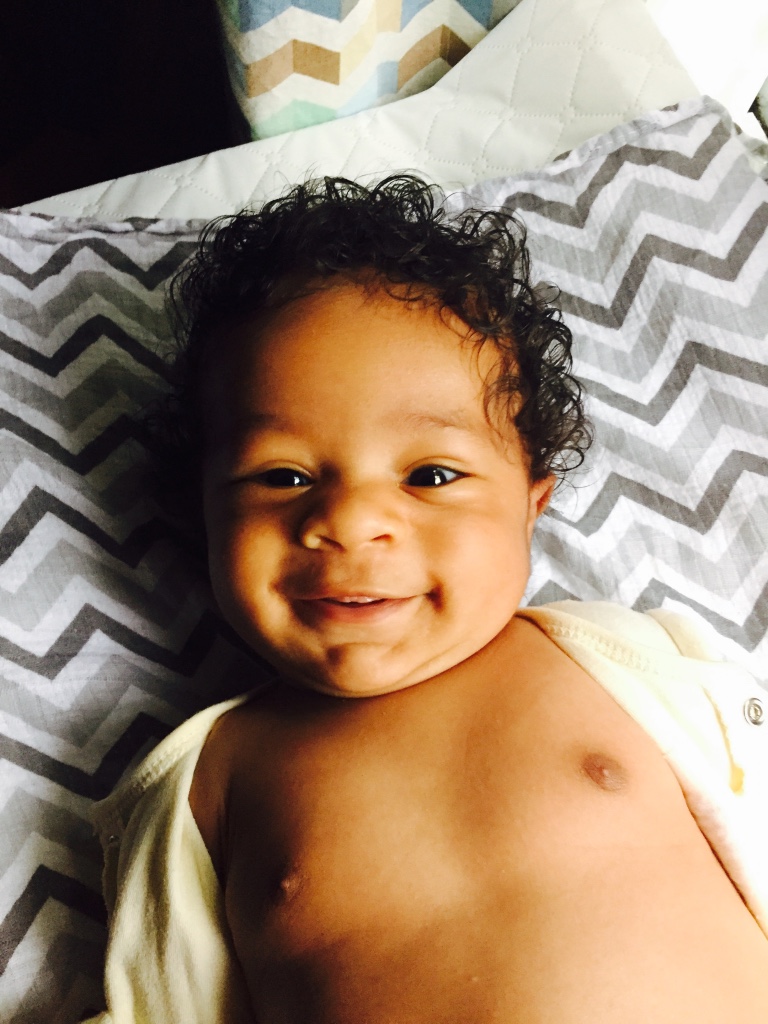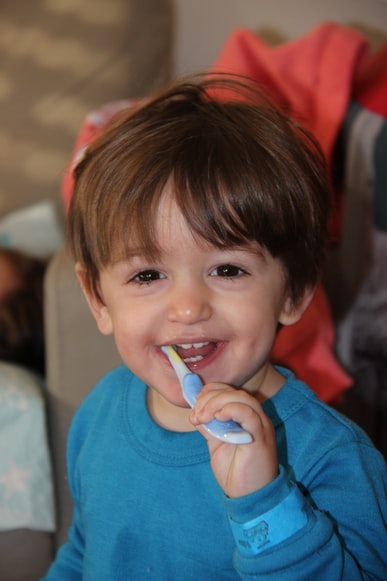
Healthy Kids and Hygiene

As parents, we all want our children to be healthy. Hygiene in kids…that encompasses quite a lot of territory. And, it can be a stinky situation for all involved. When your babies are young and dependent on you for cleanliness and health, washing their hands with soap and water after they use the restroom, having a regular bath time, brushing their teeth twice a day, and changing into a new set of clean clothes is already on your schedule. However, as they grow older, kids need more urging to keep themselves clean and healthy – as I’ve found with three daughters growing into their teen years. I wonder why it’s so difficult for my girls to understand that they must brush their hair and teeth, put on some deodorant, and change into clean clothes before they leave the house. I even asked some of my friends if they had the same issues with their pre-teens. And, surprisingly, the answer was “Yes!” Although glad I wasn’t the only mother struggling with proper hygiene in my kids, I felt this was something I needed to research to help parents teach our kids proper hygiene and why it’s so important for them to practice it daily.
Hand Washing
By the time my daughters were five years old, they could reach the sink and soap pump in restrooms. Without my needed help anymore, I assumed they were washing their hands after they used the bathroom each time. So, when I happened to notice one of my daughters quickly running her hands under the water then exiting the restaurant bathroom to run back to our table, I was shocked. I grabbed her before her backside reached the chair and rushed her back to the bathroom for a proper lesson. I had done this many times before, but obviously it didn’t sink in for her. Apparently, a lot of people don’t wash their hands properly after using the toilet.

According to the Cleveland Clinic, in one study that examined post-bathroom hand washing behaviors of 3,749 people in the U.S., only 67% of them attempted to wash their hands with soap. And, among hand washers, only 5% washed properly with soap for the recommended amount of time.” As I turned on the sink water, I showed her how to run her hands through the water, then put a dime-sized amount of soap in her palm. Next, we sang the ABCs song as she rubbed her soapy hands together creating bubbles and foam. We rinsed off her hands after our song was finished and dried them off. The Centers for Disease Control and Prevention (CDC) recommends, “It is especially important to remind children to wash their hands after using the bathroom, before eating, after touching pets, after playing outside and after coughing, sneezing, or blowing their nose. But, once handwashing becomes a habit and regular part of your children’s day, they will practice it throughout their lives.” Needless to say, I continued to role model hand washing with my daughters for several years to ensure they maintained proper hygiene for their own health and the well-being of others who may come into contact with them. Sometimes we sang the ABCs song, and sometimes they wanted to make it a game, “who could create the biggest bubble,” but I found that participating in this important skill was crucial for my girls to understand its importance.
Bathing Alone
Ages vary when it comes to readiness for bathing alone. Some kids are ready for some privacy at 5-6 years old. Others enjoy bathtime with their parents until 9-10 years old around puberty. According to Parents.com, “Bathing alone, however, can be risky because of drowning dangers, and it can take just a few seconds for even older kids to slip and drown in only a few inches of water. Because of this, many experts suggest waiting until your child is at least 8 before allowing him to dunk in the tub alone.” As their parent, you can offer helpful guidelines on how to bathe properly when they’re ready to tackle the bath or shower by themselves. Here are some tips to help you establish a bath time routine for your kids:

- Have everything they will need to clean themselves out and ready. Shampoo, conditioner, soap, and washcloth in the bath. Have a clean towel, underwear, and pajamas in the bathroom. “By allowing your child to select the towel, pajamas, etc., he will feel more included while developing decision making and cooperation skills. It also prevents situations such as a forgotten towel, which leaves him cold and wet (and takes the fun out of bath time),” notes the American Occupational Therapy Association (AOTA).
- Encourage your child to shampoo first, leaving it in while they wash half of their bodies. They can make it fun by singing the name of each body part as they go. The face, hands, feet, armpits, groin, and buttocks are areas to target with soap regularly. Once they’ve finished with half of the body parts, they can rinse out the shampoo making sure they run their hands through their hair often to get rid of all the suds and apply conditioner to finish it off. They can leave the conditioner in for the rest of the body washing then rinse their hair and body all together. Done!
- Use a clean, dry towel to pat down their bodies to prevent irritation. “But do be sure to dry certain areas. Especially remember areas of skin folds, between toes, in the groin area, and under arms, to reduce future rash and infection risk,” says Dr. Jessica Krant, a board-certified dermatologist with the American Academy of Dermatology.
Brushing Teeth
Teaching your child to brush their teeth twice a day is an important part of growing up for them. The problem in my household is the “twice a day” part. I found that my girls have no problem brushing in the morning. However, getting them to brush at night is a different story. So, I decided to make it an event. “Crank up your child’s favorite song and have a two-minute dance party. Videos or brushing apps may also make that time fly by. You can also read a 2-minute story using all your best voices,” suggests the American Dental Association. Once you’ve established a routine of brushing teeth twice daily, be sure to stick to it. We always brushed our teeth as soon as we got out of bed. It was the first thing we did in the morning and the last thing we did before getting back into bed at night.

Deodorant and Clothes
When pre-teens forget to put on deodorant – believe me – you can tell. Since their bodies are changing and developing, it’s important to emphasize the need for deodorant use every day. As parents, we need to talk to our kids about the changes going on in their bodies and explain that stronger smelling sweat and body smells are a normal part of growing up. Let them know that you and your spouse wear deodorant each day. It’s all part of getting older. Provide an antiperspirant if they’re worried about sweating too much, and emphasize that deodorant will take away the sweat smell so they feel more confident around others.

“Also teach them that some body smells can be too strong or become noticeable to other kids if they build up on their clothes. So they should start changing their clothes every day. Especially clothes that touch target areas, like socks, underwear, and shirts,” recommends ChildrensNational.org. This is still a struggle for me, personally. My daughters have their favorite shirts, shorts, and socks, and constantly complain when I ask them to change into clean clothes. “But, Mom, I haven’t exercised or sweat in these clothes,” is a common retort I hear from them. Yes, this is true. However, kids have natural oils and body odors that transfer onto their clothes. So, I simply explain to them that this lack of hygiene can lead to health issues, like skin conditions, or to an unpleasant smell to others. I’m sure not to nag them however, because that can lead to more resistance. The best advice I can give is to role model what you’d like your child to learn and apply guidance and information to help them become more independent, healthy decision makers on their own.
Keeping our children safe, healthy, and happy is every parent’s goal. By incorporating these daily hygiene tasks into your child’s routine, you are one step closer to that goal. Yes, it takes a great deal of effort to maintain this rigorous schedule, but it’s imperative for their well-being and ability to become healthy, independent adults. Isn’t that what we’re hoping for in the end? Do you have any tips on teaching healthy hygiene to kids? What has worked for you? We’d love to hear your feedback and suggestions. Please connect with us on Instagram @MapsCookingKids or on Twitter @MapsCookingKids. Until next time, Agape, be kind, and happy parenting.





